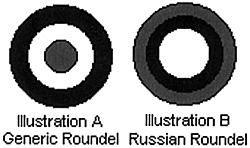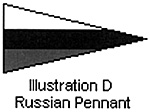
Colors
Russian aircraft appeared in several general color schemes:
a. Natural finish. Prewar aircraft and early French imports were clear-doped with varnished wood areas and unpainted metal areas. Aircraft treated with oil-based varnishes tended to be yellower-looking and the coloration of varnished wood areas varied a lot with the wide variety of varnishes used.
b. Monotone. From Winter 1915, four monotone schemes appeared. Nieuport 10s and 16s appeared painted overall in various khaki shades generally similar to British PC10, or in a red-brown shade generally similar to British PC12. Nieuport 17s, 21s, and 23s appeared painted in the French aluminum-doped scheme. SPAD VIIs and A.2s appeared painted overall in yellow-gray - as per the French yellow scheme. Fuselage and landing gear struts appeared in the painted color while inter-plane struts remained varnished wood. Dux, Farman, Voisin, and Curtis (flying boats) all appeared in a pale gray scheme that included all struts.
c. Camouflage. Applied mainly to French imports, sprayed bands of drab green and drab brown covered the upper surfaces and sides, the undersides being left in their original doped-linen, yellow, or aluminum-doped color. Upper colors overlapped the flying surface edges, resulting in an outlined look to the aircrafts' undersides. The specific shades of the green and brown varied considerably. Struts appear to have been in whatever color they started in, e.g., aluminum-doped, yellow, etc. Camouflaged aircraft sometimes didn't have their upper wing roundels reapplied after they were camouflaged.
Markings
Russian roundels (illustration B) differed from other nations' roundels in that their center disk was considerably larger in proportion to the rest of the roundel. The center disk was white, with an inner ring of blue and an outer ring of red. They generally appeared in four positions - upper top wing and lower bottom wing - and optionally on both sides of the rudder. They varied considerably in style.
 Triangular pennants (illustration D) appeared on many aircraft's' fuselage sides, especially those made in Russia. Colors were white-blue-red, running from top to bottom. Many aircraft also carried tricolor vertical rudder stripes, either in the Russian colors (white-blue-red, from front to back) or, on French aircraft, sometimes in French colors (blue-white-red, from front to back).
Triangular pennants (illustration D) appeared on many aircraft's' fuselage sides, especially those made in Russia. Colors were white-blue-red, running from top to bottom. Many aircraft also carried tricolor vertical rudder stripes, either in the Russian colors (white-blue-red, from front to back) or, on French aircraft, sometimes in French colors (blue-white-red, from front to back).
Russian aircraft didn't generally seem to carry serial numbers, though imported aircraft often had their original serial numbers in whatever positions were appropriate to the owning nationality (e.g., French aircraft often had French style serials on the rudder).
Personal and unit markings weren't often applied to aircraft but when they were, they could be quite garish, including geometric shapes, emblems, skulls and crossbones, etc. Go to Darcey's book on the Imperial Russian Air Service for further information - it's not only the best reference on Russian aircraft, it's just about the only reference!
More WWI Air Wargaming
-
WWI Air Wargaming Introduction
WWI Air Wargaming 1/300th Scale
WWI Air Wargaming 1/144th Scale
WWI Air Wargaming Painting, Markings, and Colors
WWI Air Wargaming France: colors and markings
WWI Air Wargaming Britain: colors and markings
WWI Air Wargaming Germany: colors and markings
WWI Air Wargaming Austro-Hungary: colors and markings
WWI Air Wargaming Italy: colors and markings
WWI Air Wargaming Russia: colors and markings
WWI Air Wargaming Belgium: colors and markings
WWI Air Wargaming Turkey: colors and markings
WWI Air Wargaming United States: colors and markings
WWI Air Wargaming Colors Chart (extremely slow: 600K)
Back to Table of Contents -- Courier #75
To Courier List of Issues
To MagWeb Master Magazine List
© Copyright 1998 by The Courier Publishing Company.
This article appears in MagWeb (Magazine Web) on the Internet World Wide Web.
Other military history articles and gaming articles are available at http://www.magweb.com